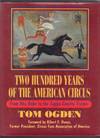![Programming a Computor [sic - Computer ] for Playing Chess [offprint]](https://d3525k1ryd2155.cloudfront.net/h/590/173/1602173590.0.m.jpg)
Programming a Computor [sic - Computer ] for Playing Chess [offprint]
by Shannon, Claude E. [Elwood]
- Used
- near fine
- first
- Condition
- Near Fine
- Seller
-
Topsfield, Massachusetts, United States
Payment Methods Accepted
About This Item
Supplied with a custom folio protector with leather spine and gilt titles over light grey cloth boards.
NOTE: The offprint wrapper title introduced a typographical error: "Programming a Computor (sic) for playing chess" - mis-spelling Computer. On the verso (the first page of the paper), the title is correct. Wraps. This paper was first presented at the National IRE Convention, March 9, 1949, in New York. "The Philosophical Magazine," Ser. 7, Vol 41, March 1950 (pp. 256-275) first published this paper. Here offered in the rare offprint form.
Levy, in his "Computer Chess Compendium," states, "This chapter serves as a historical introduction to the remainder of the volume. The very first paper, Shannon's seminal work dating back to 1949 [ Paper 1.1 in Levy's book ], was first presented as a lecture on March 9th of that year to the National Convention of the Institute of Radio Engineers in New York. Shannon pioneered computer chess as we know it today, and his ideas have been employed in almost every chess program ever written..." (introduction)
"The first technical paper on computer chess." (Origins of Cyberspace)
"In their paper on 'Chess-playing programs and the problem of complexity,' Newell, Shaw, and Simon had this to say about Shannon's paper: 'The relevant history [of chess-playing programs] begins with a paper by Claude Shannon in 1949. He did not present a particular chess program but discussed many of the basic problems involved. The framework he introduces has guided most of the subsequent analysis of the problem ... The basic framework introduced by Shannon for thinking about chess problems consists of a series of questions: 1. Alternatives. Which alternative moves are to be considered? 2. Analysis. a. Which continuations are to be explored and to what depth? b. How are positions to be evaluated strategically - in terms of their patterns? c. How are the static evaluations to be integrated into a single value for an alternative? 3. Final choice procedure. What procedure is to be used to select the final preferred move? We would hazard that Shannon's paper is chiefly remembered for the specific answers he proposed to these questions: consider all alternatives; search all continuations to a fixed depth, n; evaluate with a numerical sum; minimax to get the effective value for an alternative; and then pick the best one (Newell and Simon, 1963 p 42-44)" (Origins of Cyberspace quoting Feigenbaum pp 39-70)
PROVENANCE: The personal files of Claude E. Shannon. Seven examples were found in Shannon's files, five in nice condition, one lacking staples, and the seventh badly creased. This example is the last remaining copy in nice condition.
REFERENCES:
Sloane and Wyner, "Claude Elwood Shannon Collected Papers," #54
Hook and Norman, "Origins of Cyberspace," #882
Levy, David: "Computer Chess Compendium," Springer-Verlag: 1988. (Paper 1.1)
Feigenbaum, E. A. and Feldman, J. "Computers and Thought" (New York: McGraw-Hill, 1963).
Reviews
(Log in or Create an Account first!)
Details
- Bookseller
- Kuenzig Books
(US)
- Bookseller's Inventory #
- 29292
- Title
- Programming a Computor [sic - Computer ] for Playing Chess [offprint]
- Author
- Shannon, Claude E. [Elwood]
- Format/Binding
- Wraps
- Book Condition
- Used - Near Fine
- Quantity Available
- 1
- Edition
- First Separate Edition
- Publisher
- [Taylor & Francis]
- Place of Publication
- [London]
- Date Published
- 1950
Terms of Sale
Kuenzig Books
Reserved items are held for 7 days pending receipt of payment. Reservations may be made by phone or email. Please identify the author, title, and stock number of the item. We accept wire transfers, checks and money orders drawn on U.S. banks in U.S. dollars. We also accept Paypal and American Express, Mastercard, VISA and Discover cards. Our Guarantee: All purchases are returnable within 30 days IF NOT AS DESCRIBED, presuming they are received in the same condition as sent. Please insure return shipments, and contact us in advance in order to make appropriate arrangements.
About the Seller
Kuenzig Books
About Kuenzig Books
Glossary
Some terminology that may be used in this description includes:
- Verso
- The page bound on the left side of a book, opposite to the recto page.
- Fine
- A book in fine condition exhibits no flaws. A fine condition book closely approaches As New condition, but may lack the...
- Folio
- A folio usually indicates a large book size of 15" in height or larger when used in the context of a book description. Further,...
- Spine
- The outer portion of a book which covers the actual binding. The spine usually faces outward when a book is placed on a shelf....
- Gilt
- The decorative application of gold or gold coloring to a portion of a book on the spine, edges of the text block, or an inlay in...
- Cloth
- "Cloth-bound" generally refers to a hardcover book with cloth covering the outside of the book covers. The cloth is stretched...
- New
- A new book is a book previously not circulated to a buyer. Although a new book is typically free of any faults or defects, "new"...
- Remainder
- Book(s) which are sold at a very deep discount to alleviate publisher overstock. Often, though not always, they have a remainder...
- Offprint
- A copy of an article or reference material that once appeared in a larger publication.
![Programming a Computor [sic - Computer ] for Playing Chess [offprint]](https://d3525k1ryd2155.cloudfront.net/h/590/173/1602173590.0.s.jpg)
![Programming a Computor [sic - Computer ] for Playing Chess [offprint]](https://d3525k1ryd2155.cloudfront.net/h/590/173/1602173590.1.s.jpg)

